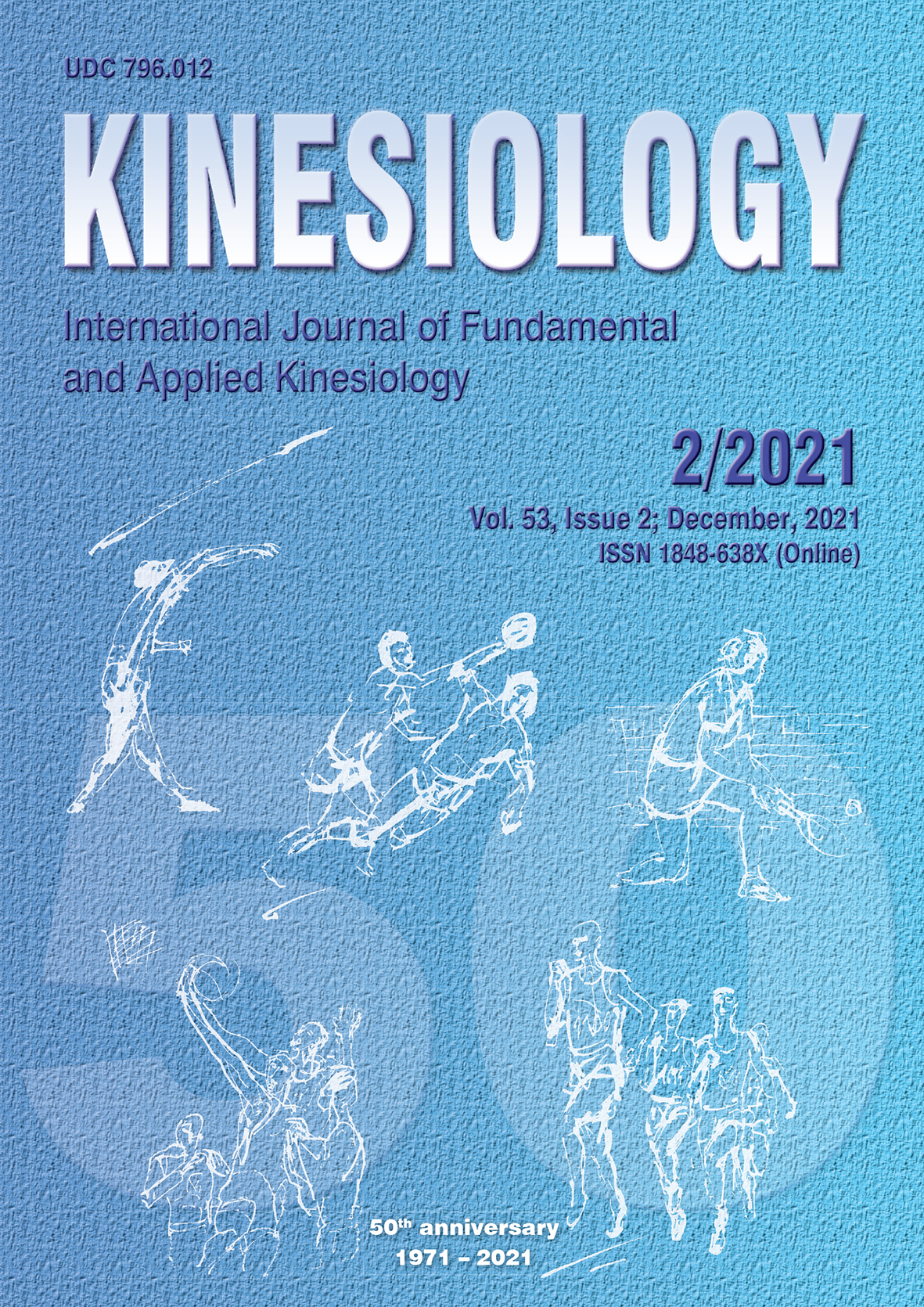DECRASE IN CEREBRAL BLOOD FLOW DURING MAXIMAL HANDGRIP ISOMETRIC CONTRACTION – A BRIEF REPORT
Abstract
Findings of the studies on the relationship between isometric handgrip contraction and changes in cerebral blood flow (CBF) are contradictory. The aim of the study was to evaluate CBF changes during one minute of a maximal handgrip isometric contraction. Our main hypothesis was that the maximal handgrip test will cause a decrease in CBF related to the decrease in handgrip strength. The study protocol included a transcranial Doppler ultrasound measurement of middle cerebral arterial mean flow velocity (Vmean) with the concomitant measurement of the sustained maximal handgrip strength over a period of one minute in 12 healthy male subjects. The main findings indicate that a maximal handgrip exercise causes a significant decrease in cerebral blood flow that is slightly more prominent on the contralateral side. This decrease is accompanied by a significant but transient increase in heart rate and also by an important (16%) increase in mean arterial pressure. The maximal isometric contraction may result in an considerable decrease in cerebral blood flow that in certain cases may become even clinically relevant. In the light of our findings, we suggest that maximal isometric contractions should be better avoided as a therapeutic tool and that isometric exercises of intensities up to 60% of maximal voluntary contraction are better used.
Key words: neurophysiology, muscle function, exercise prescription
Downloads
Published
How to Cite
Issue
Section
License

This work is licensed under a Creative Commons Attribution-NonCommercial 4.0 International License.
At Faculty of Kinesiology we recognize that access to quality research is vital to the scientific community and beyond. Kinesiology is non-profit journal and all costs of publishing and peer review process are covered by the publisher itself or other funding sources like Ministry of Science and Education of the Republic of Croatia. Full text papers are also available free of charge at http://hrcak.srce.hr/kineziologija. There are no restrictions on self archiving of any form of paper (preprint, postprint and publisher's version).
Articles are distributed under the terms of the CC BY - NC 4.0
Kinesiology does not charge any fees to authors to submit or publish articles in our journal.


